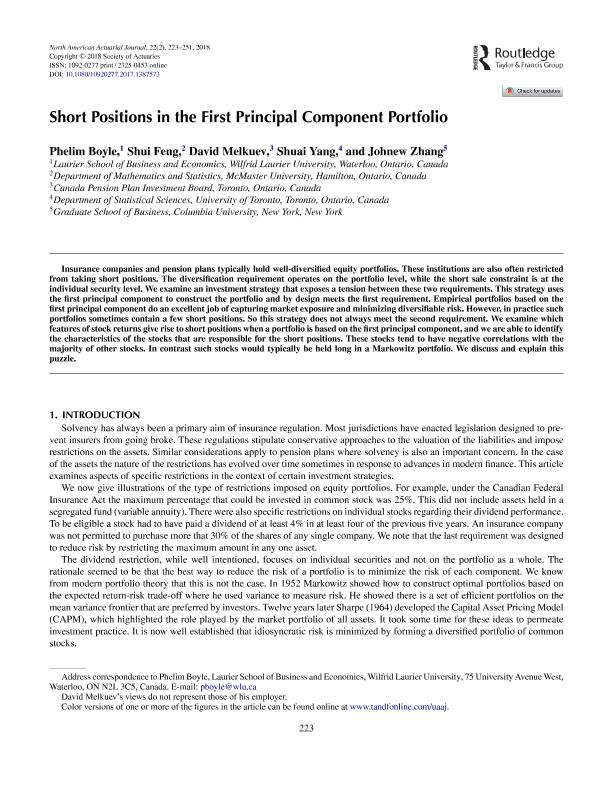Short positions in the first principal component portfolio

Contenido multimedia no disponible por derechos de autor o por acceso restringido. Contacte con la institución para más información.
| Tag | 1 | 2 | Value |
|---|---|---|---|
| LDR | 00000cab a2200000 4500 | ||
| 001 | MAP20180025730 | ||
| 003 | MAP | ||
| 005 | 20180830121903.0 | ||
| 008 | 180808e20180601usa|||p |0|||b|eng d | ||
| 040 | $aMAP$bspa$dMAP | ||
| 084 | $a6 | ||
| 245 | 1 | 0 | $aShort positions in the first principal component portfolio$cPhelim Boyle...[et al.] |
| 520 | $aInsurance companies and pension plans typically hold well-diversified equity portfolios. These institutions are also often restricted from taking short positions. The diversification requirement operates on the portfolio level, while the short sale constraint is at the individual security level. We examine an investment strategy that exposes a tension between these two requirements. This strategy uses the first principal component to construct the portfolio and by design meets the first requirement. Empirical portfolios based on the first principal component do an excellent job of capturing market exposure and minimizing diversifiable risk. However, in practice such portfolios sometimes contain a few short positions. So this strategy does not always meet the second requirement. We examine which features of stock returns give rise to short positions when a portfolio is based on the first principal component, and we are able to identify the characteristics of the stocks that are responsible for the short positions. These stocks tend to have negative correlations with the majority of other stocks. In contrast such stocks would typically be held long in a Markowitz portfolio. We discuss and explain this puzzle. | ||
| 650 | 4 | $0MAPA20080590567$aEmpresas de seguros | |
| 650 | 4 | $0MAPA20080592455$aPlanes de pensiones | |
| 650 | 4 | $0MAPA20080625542$aDiversificación de los riesgos | |
| 650 | 4 | $0MAPA20080583989$aCartera de valores | |
| 650 | 4 | $0MAPA20080552701$aSolvencia | |
| 773 | 0 | $wMAP20077000239$tNorth American actuarial journal$dSchaumburg : Society of Actuaries, 1997-$x1092-0277$g04/06/2018 Tomo 22 Número 2 - 2018 , p. 223-251 |

